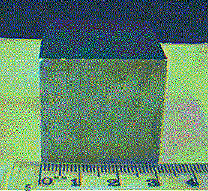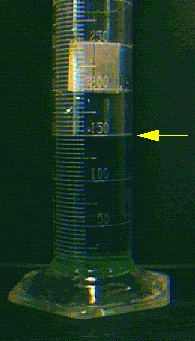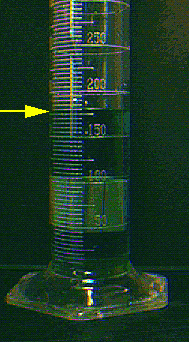|
Volume is the amount of space
an object occupies. The
volume of an object can be calculated using mathematical equations. The volume
of a cube can be found using the formula V=(side)x(side)x(side) or by using a
graduated cylinder to measure liquid displacement.
Case
I. Finding
volume geometrically. What
is the volume of the metal cube shown here (to the nearest tenth of a cm?

Note:The
side of the cube is approximately 3.1 centimeters. How many inches does this convert
to (use 2.54 cm. = 1 inch)? A calculator is available to the right.
Case
II. Measuring Volume using a graduated cylinder. It
is also possible to find the volume of an object by measuring the volume of water
that it displaces. The
cube shown above is lowered into a graduated cylinder containing water.
What was the amount
of water displaced by the object?  Before Before
 After After
Please enter your answer in the space provided. If you need a calculator one
is available. to the right.
Notice
that both methods give fairly accurate values for the volume of the cube. Why
are the volumes not exactly the same for the two methods used?
How does the volume
of a cube vary with the area of one of its surfaces? With the length of one side
of the cube?Type
in any value for length and then click on one of the other boxes.
Please
continue to the next chapter!
Please continue to the next chapter on density 
| 
